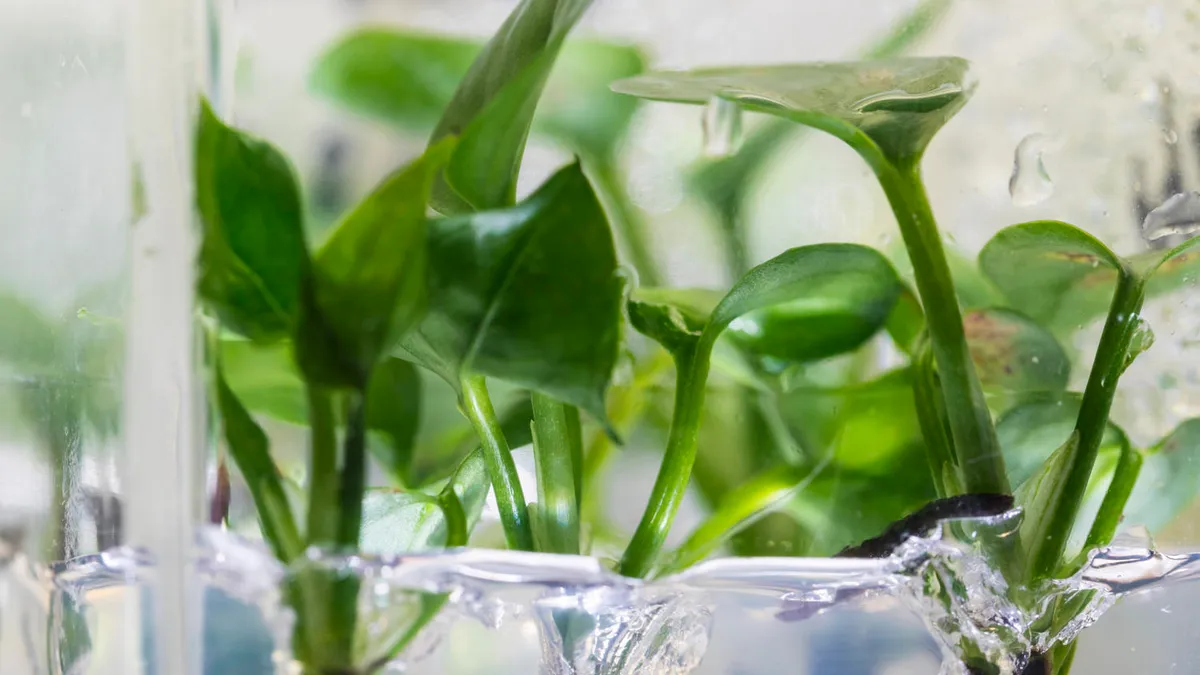
Nobody wants to walk in the front door, take a deep breath and taste stale air. Air purifiers might be the go-to solution for purifying the air with technology, but Mother Nature has another option: houseplants. Choosing the right plants for your home can improve the air quality, filter some common toxins and add a pop of green to your decor.
Beyond their air-purifying benefits, houseplants are known to reduce allergens, deter pests and even help regulate humidity to keep your home feeling comfortable. They’re also a proven way to boost your mood and create a more relaxing space. If you’re looking for the best houseplants to purify your air and enhance your home, here are the top expert-recommended picks to get you started.
Can plants really purify air?
Before we get carried away with what plants can actually do to purify air, most modern science suggests you’d need hundreds of plants to make a significant difference in air quality. But tech startup Neoplants claims its proprietary solution can supercharge plants to clean air 30 times faster.
While the effectiveness is up for debate, one thing is clear: Adding plants to your home won’t hurt the air quality. So, whether you’re hoping to neutralize toxins from a clunky HVAC or old stove or simply looking to freshen the stale, musty air in your home, here are four plants known for air purification.
Don’t miss any of our unbiased tech content and lab-based reviews. Add CNET as a preferred Google source.
Best houseplants for air purification
Multiple studies have proven that certain plants can absorb polluting organic compounds like formaldehyde and benzene through their leaves and roots. That absorption purifies the air around the plant.
A NASA study even highlighted several plants that excelled in cleaning the air around them. If you’re looking to breathe easier, but don’t want to purchase an air purifier, choose one of these plants for their ability to improve indoor air quality.
Marble queen pothos or devil’s ivy (Epipremnum aureum)
The devil’s ivy, also known as golden pothos, is a great air-purifying plant, known to remove harmful VOCs such as formaldehyde, benzene and toluene. It’s particularly well-suited for those who have trouble keeping plants alive. The pothos is nearly impossible to kill — hence the diabolical nickname — and needs watering only every seven to 10 days.
The pothos is so proficient at cleaning that biotech startup Neoplants uses this species for its microbiome-charged air-purifying system that turns an ordinary houseplant into an air-cleaning machine that removes the same amount of toxins as 30 plants.
On the downside, the marble queen pothos is not particularly pet-friendly and contains toxins that can harm your four-legged friend if ingested.
Peace lily (Spathiphyllum)
Named for the white blooms reminiscent of a surrender flag, these budding beauties remove formaldehyde, benzene and carbon monoxide from the air around them. Peace lilies can grow up to 16 inches tall and don’t need direct sunlight but they do require regular watering.
English ivy (Hedera helix)
According to NASA’s study, English ivy is a fantastic plant to grow indoors if you’re looking for air-filtering ability.
English ivy absorbs formaldehyde, found in some household cleaners, and can reduce the amount of airborne fecal matter. However, it should be kept out of the reach of any pets, as it can be poisonous if ingested.
Gerbera daisy (Gerbera jamesonii)
This bright and colorful flower packs a pollutant-absorbing punch, filtering out trichloroethylene and benzene, chemical compounds found in cleaners and solvents. Gerbera daisies do need plenty of direct sunlight, so keep your plant in a well-lit area and be sure to water frequently. These exotic-looking flowers are quite simple to grow.
For more gardening and plant hacks, read about how to grow vegetables and how to change the color of your hydrangeas.
FAQs



